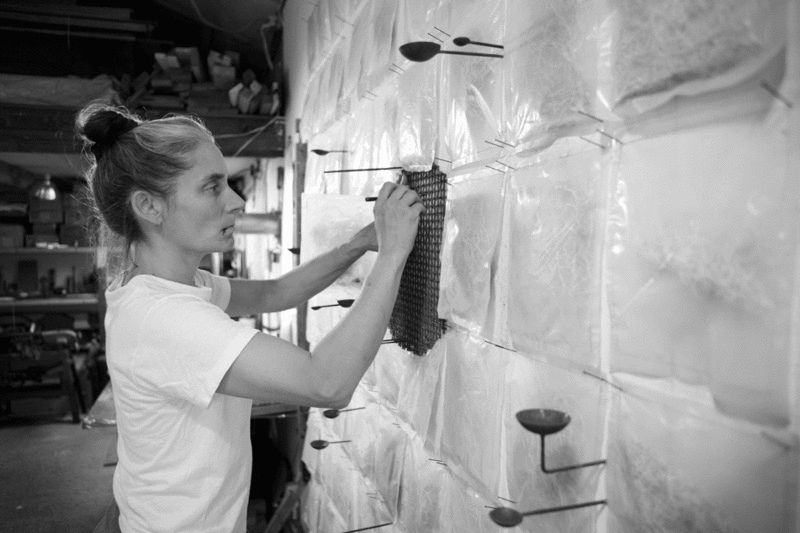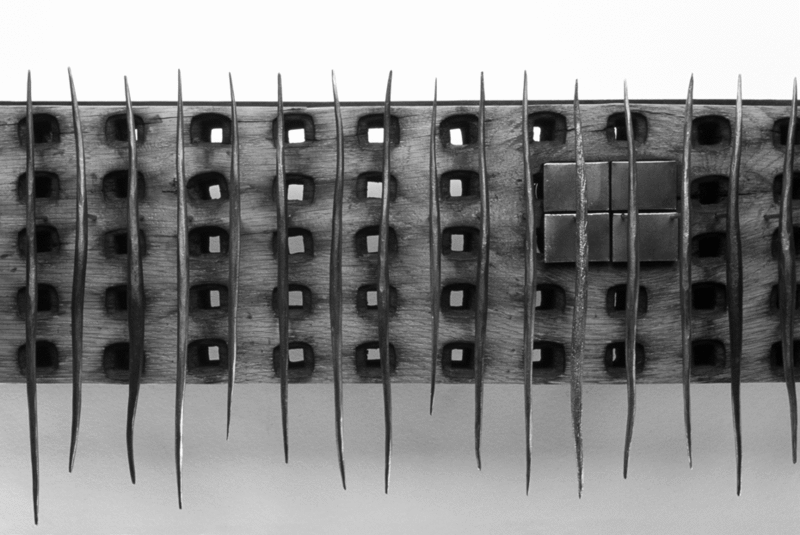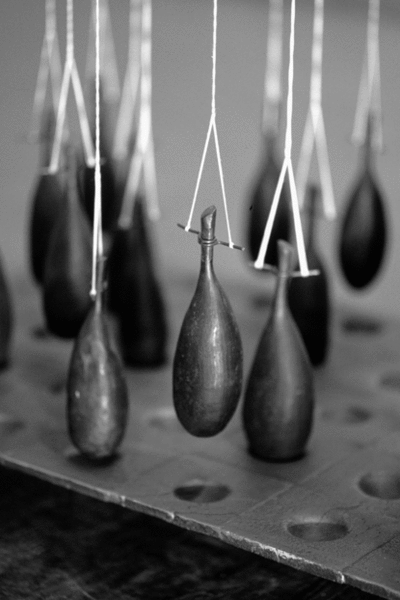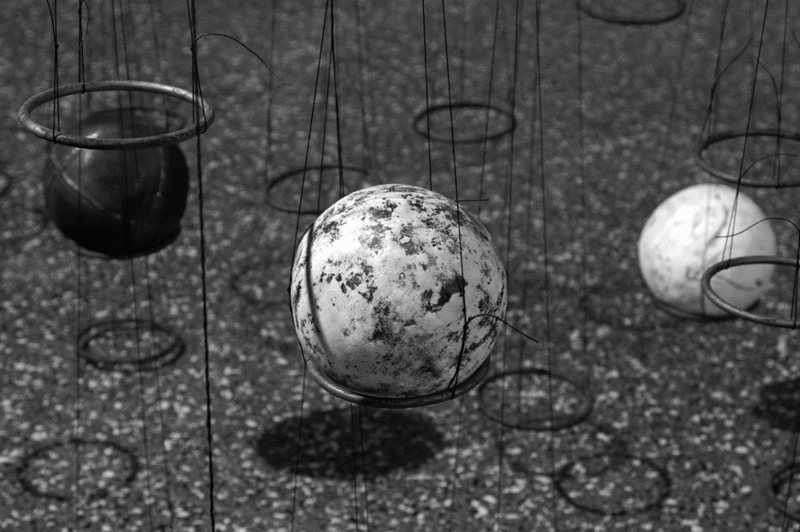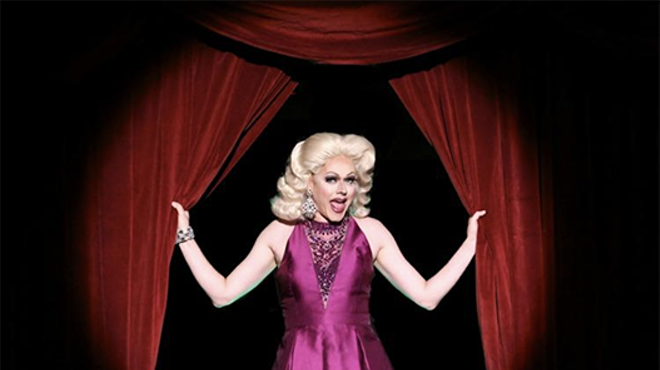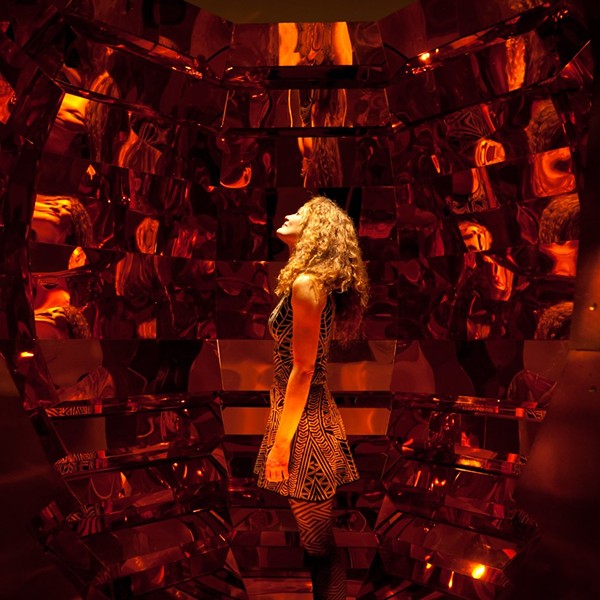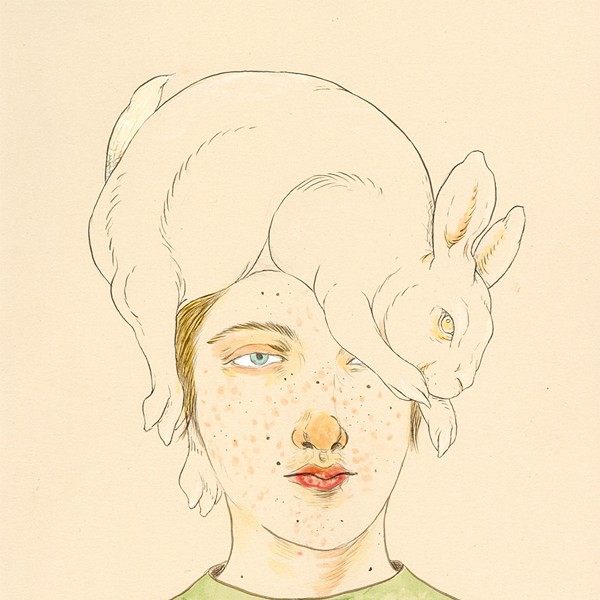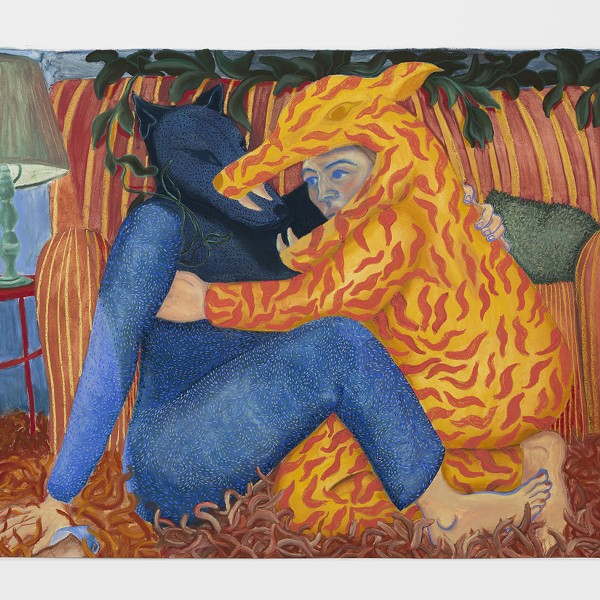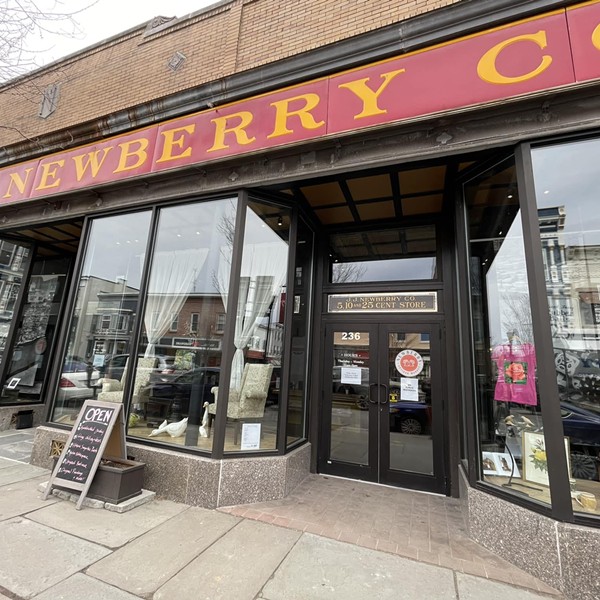Dutchess County resident Pamela Wallace has crafted for herself a life with a single organizing principle—the sheer act of making. Having studied sculpture at Bard College and Southern Illinois University, she has focused on, for lack of a better word, a makerly aesthetic, which involves fabricating, forging, sewing, carving, casting or welding virtually every element of her work. Often her sculptures locate the unexpected intersection where nature and industry meet, as forged steel rusts, or raw wood weathers to a bleached, silvery sheen. Her poetic forms frequently invoke abstract grids, but this abstraction inevitably breaks down, as the logic and the process of the physical materials take center stage.
Wallace has most recently been working on a large site-specific piece made of plastic sheets sewn together with wood wool inside titled Still, Between My Arm and Shoulder (pictured on this page), which will fill a broad expanse of wall in the main gallery at the Arts Society of Kingston. The work is a key component of the exhibition “Allusive Objects,” a show-within-the-show that is part of the Kingston Sculpture Biennial, which opens on July 7 (and which I am the curator).
—Beth E. Wilson
PAMELA WALLACE ON HER WORK
Making and thinking
I can’t really imagine not doing it, or living without it. It’s about making things, using my hands, manipulating material, and it’s gotten to the point where it’s in every aspect of my life. I work part time as a carpenter, part time teaching art, I’m building a new studio, and I guess I’m a part-time—or is it full-time?—artist on top of all that. I love it.
I think art making is about using your hands. In the 20th century, this separation happened between making and concept, and I don’t understand why that happened. I see them as being part of the same thing. I don’t think you can separate the two. How many people do I know that try to make art on concept alone and it fails, it almost always fails. I think there’s some fantastic conceptual art out there, but I don’t think it’s all successful. I don’t think a student learning to make art can just say “I’m gonna make conceptual art and it’ll be great.” That works for one in a million. The two [aspects] have to go together.
So it’s about liking to manipulate things and making things with my hands, but also thinking about having these ideas come to me of how to put something together, how to make something. Those ideas can come to me totally unexpectedly as I walk down the street, while I’m eating my bowl of cereal, while I’m in the studio when I just pick up a piece of metal and ask, “What if I take this thing and cast it?” Or, “What if I soak it in plaster and then in resin and sit it outside and let the weather get to it?” Suddenly it hits a point when it makes sense to me.
The faux found object
Often people walk up to my works and assume that I found a part. They’re surprised to find out that I made it, especially when I forge something intricate. If I find an object I like, because I know how to make these things, I want to make a version of that myself. I feel like I need more control [than using found objects provides]. I want to be the one where it originated from, rather than having it originate from someplace I don’t know. There’s an allusive quality, where people don’t really know where to tie it down—where does it come from, what are its roots, what’s its history? I don’t know what it is either, and I don’t want it to be an easy answer. If it’s found from an old factory that made machine parts, then people fix that object into that place. Oh, it’s a machine part; oh, it’s a gear from a factory. Then it’s fixed there, and the ephemeral isn’t allowed to come out, they can’t wander into someplace where they don’t know what it is. So I think it keeps them from fixing an originating point to that form.
When I’m making something, when I’m sewing all those bags [for the Biennial piece], I cut all the plastic, I sew it, stuff the fibers inside, over and over. I become a workman—sewing bags, doing my factory job, repetitive stuff, over and over again. But I’m allowed to have accident come in—I don’t have to make them all perfect [like a factory worker], so I can make one with one piece of fiber in it, and then another that’s stuffed full, and another where the fiber’s sticking out through the seam. I allow the randomness and accident to come into the process. And then in hanging it, there’s not a particular order to the bags—there’s no necessary relationship between one bag and the next. The randomness of that is exactly what I want.
Neverending stories
When I think of the work that I want to go back and look at, that I’m constantly drawn to (people like Eva Hesse, or someone not quite so obvious would be Bruce Nauman) it’s because I can constantly go back to this work and enjoy what I’m seeing. What it’s about isn’t immediately apparent. So I can look at it again, and think about it differently, and think about it some more in yet another way. Someone like Juan Munoz, who works with the figure, and he creates these narratives with the figure (totally unlike my work) but I can continue to go back to that and wonder what it’s about. I don’t want to be told immediately what it’s about. I can’t stand art that does that. What do I do after that? Is there room for me to go back to it and enjoy it again? It’s like the second time you hear a joke, the second time you hear a funny story, do you like it? Sometimes yes, but most of the time it’s done [after the first telling]. In art, I don’t want the answer too quickly.
(non-)monumentality
Someone once said to me, your work is monumental with a small m. I thought that was really funny, but really on the mark. I use the grid, but then I have these moments of what I call punctuation. You can’t have a run-on sentence. If you’re listening to music, there are dynamics, short notes, long notes, you have to be careful to put in some punctuation. So I have the grid, but with moments of punctuation in it. I love Agnes Martin’s work, but I couldn’t have it hanging in every room of my house.
Engendered acts
In my family, my dad was in the basement all the time making things, and my mom was in the kitchen all the time, making great food, or sewing. So if I wanted to have a relationship with my mother and my father, I had to be in the basement half the time, and in the kitchen half the time. I always loved working with my hands, so it didn’t matter whether I was rolling out a pie shell, and if I was downstairs where my dad taught me how to use a band saw—I think he put a stool in front of it—and I cut out wooden puzzles for myself. I didn’t think about art, but I just wanted to make things. It didn’t really matter what it was, in a way, or if it had gender attached to it, I didn’t know any better.
I think there are gender issues in my work, I think they have to be there. I wonder sometimes if I like including both sides of me, mixing up the two gender-specific identities in one piece, the sewing and the forging. I think I can’t deny that there are gender issues there. People just can’t believe that I’m forging, or welding, and that I’m a good welder, too. I believe, at this point, if it’s makeable, I could make it. And that’s a great feeling.







